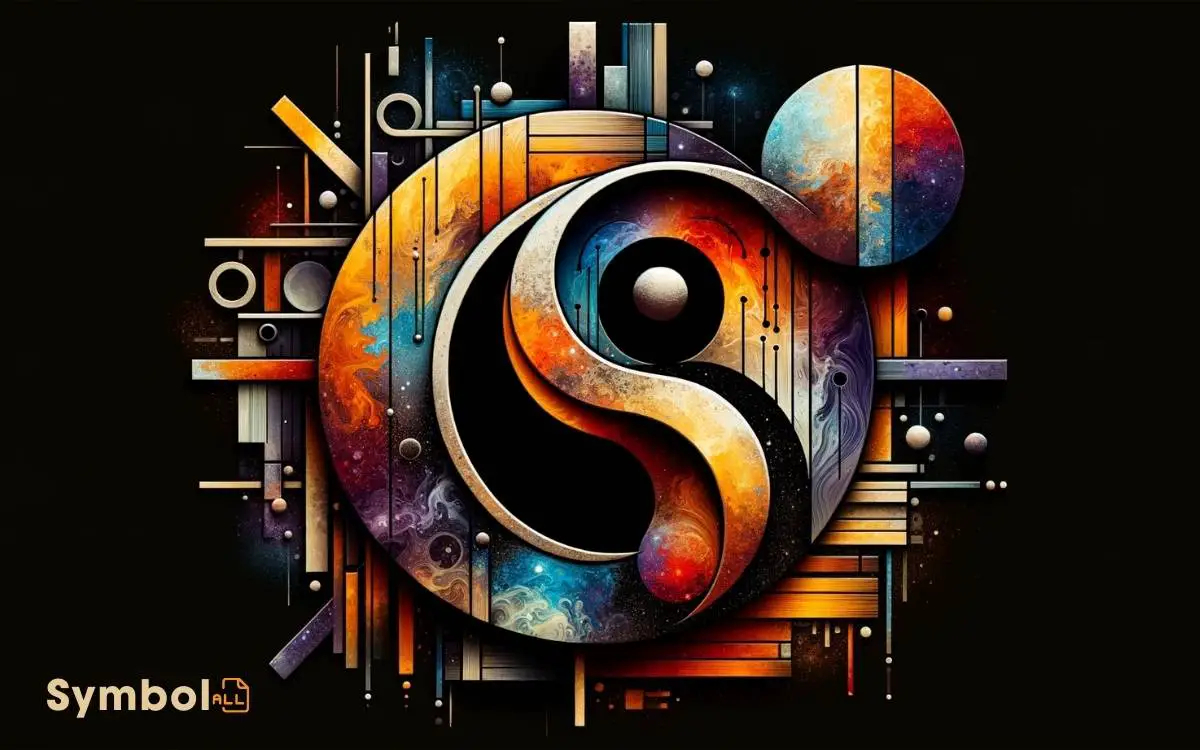Symbol Used to Represent Mercury: Astrological Roots!
The symbol used to represent Mercury merges ancient traditions with scientific understanding. Originating from alchemical and astrological roots, it encapsulates the celestial body’s dual essence as both a planet and a metal.
Astrologically, it denotes intellect, communication, and swift movement, reflecting Mercury’s role in mythology as a messenger. Scientifically, it embodies mercury’s unique properties – its liquid state at room temperature and use in various compounds.
This symbol’s layers convey deep historical, spiritual, and material significances, from guiding alchemists in transformation pursuits to aiding modern scientists and astrologers. Unpacking its complexities offers further insight into its enduring relevance.

Key Takeaways
Historical Origins
Tracing back to ancient civilizations, the symbol for Mercury has evolved from complex alchemical and astrological origins, embodying both the planet and the Roman god of the same name.
Initially, this representation was deeply intertwined with early astronomical observations and the mythological attributes of Mercury, known for its swiftness and connection to communication and commerce.
You’ll find that the symbol itself a circle surmounted by a small cross with a crescent on top integrates universal symbols to denote mind (circle), matter (cross), and spirit (crescent), reflecting Mercury’s multifaceted roles.
This intricate synthesis showcases the ancients’ efforts to encapsulate the celestial body’s essence and its divine counterpart’s attributes into a singular, potent emblem, signifying a harmonious blend of cosmic observations and mythological significance.
Alchemical Significance
Building on its historical origins, the symbol for Mercury also holds profound alchemical significance, as alchemists saw it as a key to revealing the secrets of transformation and creation.
They believed Mercury transcended both the solid and liquid states, embodying a magical essence capable of converting base metals into gold.
This duality symbolized the alchemical process itself, where the blending of opposites produces something greater.
You’ll find this emblematic of the alchemist’s quest for enlightenment, where Mercury’s symbol serves as a metaphor for spiritual rebirth and the attainment of higher knowledge.
Its representation in texts and diagrams provided a coded language, guiding initiates through the complex pathways of alchemical experimentation. As a result, Mercury’s symbol isn’t just a chemical sign; it’s a profound emblem of alchemical transformation and wisdom.
Astrological Interpretations
In astrology, the symbol for Mercury represents communication, intellect, and the way you process and share information, playing an essential role in understanding personal interactions and the functioning of the mind.
| Aspect | Influence on Communication | Impact on Intellect |
|---|---|---|
| Mercury in Aries | Direct and assertive | Quick, innovative thinking |
| Mercury in Taurus | Methodical, deliberate | Persistent, practical thought |
| Mercury in Gemini | Versatile, adaptable | Intellectually curious |
| Mercury in Cancer | Emotionally driven | Intuitive, reflective thinking |
| Mercury in Leo | Bold, confident | Creative, broad-minded |
Mercury’s placement in your natal chart significantly influences how you perceive, process, and communicate ideas.
It’s vital for accurate astrological analysis to understand this symbol’s technical nuances, ensuring a thorough interpretation of one’s intellectual capabilities and communicative approach.
Scientific Symbolism
You’ll find that the symbol for Mercury holds significant meaning beyond its astrological interpretations, tracing back to its alchemical roots.
This emblem not only encapsulates the planet’s historical and mystical associations but also plays a crucial role in modern scientific applications.
Mercurys Alchemical Roots
Mercury’s symbol, an amalgamation of a circle, cross, and crescent, has deep roots in alchemical traditions, embodying both physical and spiritual transformation.
This symbol encapsulates the essence of Mercury not just as a material substance but as a concept pivotal to the alchemical pursuit of turning base metals into gold and achieving the ultimate wisdom.
In analyzing its components:
- The circle represents the spirit.
- The cross symbolizes the material plane.
- The crescent signifies the mind.
- Together, they encapsulate alchemy’s aim: to harmonize spirit, body, and mind.
- This symbol also illustrates the dual nature of Mercury, embodying both male and female principles, essential for the alchemical process of creation and transformation.
Understanding this symbol offers insight into the philosophical underpinnings of alchemy, where Mercury played a central role in efforts to uncover the mysteries of existence and creation.
Modern Scientific Applications
Shifting to modern times, the symbol for Mercury takes on new significance in the domain of scientific applications, reflecting its pivotal role in research and technology.
It’s important to understand that this symbol isn’t just a relic from the past but a dynamic representation in various scientific fields.
In astronomy, it denotes the planet Mercury, a key subject in studies of planetary motion and space exploration.
In chemistry, the symbol signifies the element mercury, Hg, central to discussions on material properties and environmental science, particularly in the context of its toxicity and impact on ecosystems.
This dual significance underscores Mercury’s multifaceted relevance in contemporary science, serving as a bridge between historical symbolism and modern scientific inquiry.
Cultural Representations
You’ll find that the symbol for Mercury is steeped in historical mythological associations, reflecting its significance in ancient cultures.
This foundation forms a bridge to modern symbolic interpretations, where the symbol’s meanings have evolved yet remain anchored in its mythic roots.
Analyzing these shifts offers insight into how cultural contexts shape and redefine symbolic content over time.
Historical Mythological Associations
Delving into the symbol for Mercury reveals its deep-rooted connections with ancient Roman mythology, where it represented the swift messenger of the gods, embodying trade, travel, and communication.
This association isn’t merely superficial but is laden with intricate meanings and implications that have persisted through time.
To understand its historical mythological associations, consider the following aspects:
- Mercury’s role as a mediator between the divine and mortal domains.
- Its symbolism of duality, bridging commercial and intellectual pursuits.
- The god Mercury’s attributes, including the caduceus, winged sandals, and helmet, symbolizing speed and eloquence.
- Associations with the Greek counterpart, Hermes, emphasizing the blend of cultures.
- The influence on alchemical texts, where Mercury represented transformation and the primal matter.
This analysis reveals the symbol’s multifaceted nature, embedded in rich mythological traditions.
Modern Symbolic Interpretations
In contemporary culture, the symbol for Mercury takes on diverse interpretations, reflecting its enduring legacy in various facets of society.
You’ll find this emblem not only in astrological contexts but also within the domains of chemistry and environmental movements, each attributing unique meanings and connotations to this ancient symbol.
| Context | Interpretation | Significance |
|---|---|---|
| Astrology | Communication, intellect | Represents mental agility |
| Chemistry | Mercury (the element) | Denotes the element’s properties |
| Environmentalism | Toxicity, need for caution in handling substances | Highlights environmental concerns |
This table showcases how the Mercury symbol’s application spans across distinct disciplines, each deriving and imparting a nuanced understanding reflective of its core principles.
It’s a confirmation of the symbol’s versatility and its ability to convey complex ideas and warnings in a succinct and universally recognizable form. This is evident in how diverse cultures and disciplines adopt and adapt symbols to communicate critical information effectively. For instance, symbols on weather maps serve as a prime example, providing viewers with instant insights into atmospheric conditions, potential hazards, and changes in climate. These visual cues ensure that even intricate scientific data can be translated into actionable knowledge for a wide audience.
Evolution Over Time
Mercury’s symbol has undergone significant transformations over the centuries, reflecting evolving understanding and cultural interpretations of this element.
As you explore its history, you’ll find:
- Initially, symbols were simplistic, focusing on Mercury’s liquid state.
- Alchemical texts later adopted more complex symbols, signifying both the material and spiritual aspects.
- During the Renaissance, the symbol evolved to incorporate astrological associations, linking Mercury to the planet and deity.
- In the 18th century, scientific advancements led to a standardized symbol, emphasizing Mercury’s position in chemistry and alchemy.
- The 20th century introduced a simplified version for use in modern chemistry, focusing on clarity and universality.
This evolution highlights how perceptions of Mercury have shifted from mystical to scientific, mirroring broader changes in human thought and knowledge.
Artistic Depictions
Exploring beyond its symbolic evolution, let’s now examine how artists have depicted Mercury, capturing its essence through various mediums and styles.
Artists have long been fascinated by Mercury, not just as a planetary body, but also as a mythological figure. Their depictions range from classical sculptures to contemporary digital art, each offering a unique interpretation.
In sculpture, Mercury’s speed and dynamism are often emphasized through his poised, athletic form, ready to leap into action. Renaissance paintings, on the other hand, highlight his role as a messenger, featuring elements like winged sandals or a caduceus.
Modern interpretations might abstract these elements, focusing instead on Mercury’s symbolic associations with communication, intellect, and movement.
Each artistic rendition serves as a lens, magnifying different facets of Mercury’s rich symbolism and historical significance.
Modern Usage
You’ll find the symbol for Mercury retains its significance in both scientific and astrological contexts in modern times.
In science, it represents the planet and the elemental metal, a proof to its enduring utility.
Astrologically, the symbol’s interpretation influences contemporary beliefs about communication and intellect, showcasing its broader cultural impact.
Scientific Symbol Significance
In modern usage, the symbol for mercury carries significant implications across various scientific disciplines, denoting not only the element itself but also its unique properties and applications.
- Chemistry: It represents mercury, an element known for its liquid state at room temperature and its ability to amalgamate with many metals.
- Environmental Science: The symbol highlights mercury’s role in environmental pollution, especially in water bodies, affecting aquatic life and food chains.
- Pharmaceuticals: Mercury compounds, symbolized in formulas, have historical significance in medicine, though their use is now limited due to toxicity.
- Material Science: The symbol denotes mercury’s use in various alloys and compounds with unique physical properties.
- Equipment Manufacturing: It signifies mercury’s application in scientific instruments like thermometers and barometers, leveraging its thermal expansion properties.
Astrological Interpretations
Beyond its scientific significance, the symbol for mercury also holds profound implications within the domain of astrology, shaping interpretations and beliefs about personality, communication, and intelligence.
You’ll find that in astrology, Mercury’s symbol represents not just the planet itself but an array of complex concepts. It’s intricately linked to how individuals process information, articulate thoughts, and adapt to various forms of communication.
This connection suggests a direct influence on one’s intellectual abilities, learning styles, and even linguistic skills. Additionally, Mercury’s placement in a birth chart can pinpoint areas where cognitive agility shines or needs development.
Analyzing this symbol within a natal chart offers precise insights into how a person interacts with their immediate environment, highlighting the fluidity or challenges in exchanging ideas and information.
Controversies and Mysteries
Throughout history, controversies and mysteries have surrounded the symbol for Mercury, raising questions about its origins and meanings.
- Alchemical Influences: The symbol’s resemblance to the caduceus and its alchemical connotations suggest a deeper, mystical significance.
- Geometric Proportions: Scholars debate the precise geometric proportions inherent in the symbol, suggesting a hidden mathematical harmony.
- Ancient Texts Discrepancies: Variations in ancient manuscripts have led to differing interpretations of the symbol’s original design.
- Cultural Interpretations: Diverse cultures have ascribed unique meanings to the Mercury symbol, complicating a singular understanding.
- Symbolic Evolution: The symbol’s evolution over centuries raises questions about the continuity and fidelity of its representation.
This complexity invites a thorough examination, as you explore further into the enigmatic symbol of Mercury, uncovering layers of historical, scientific, and cultural significance.
Future Perspectives
As we explore future outlooks, it’s vital to contemplate how advancements in technology could reveal the enigmas surrounding the Mercury symbol.
You’ll find that interdisciplinary approaches, combining archeology, linguistics, and digital modeling, offer promising avenues for deciphering its origins and meanings.
Sophisticated algorithms have the potential to analyze vast datasets of ancient texts and artifacts, identifying patterns and connections previously obscured by the limitations of human analysis.
Additionally, virtual reality could enable you to explore ancient sites and contexts in which the Mercury symbol was used, providing insights into its practical and ceremonial uses.
As you immerse yourself in these technological frontiers, it’s important to maintain a critical perspective, ensuring interpretations remain grounded in empirical evidence while being open to novel hypotheses that technology enables.
Conclusion
To sum up, you’ve journeyed through the multifaceted symbolism of mercury, from its alchemical roots to its modern scientific applications.
Remember, ‘a rolling stone gathers no moss,’ and similarly, mercury’s symbolism continues to evolve, reflecting its fluid nature across various domains.
Analyzing its historical origins, astrological interpretations, and cultural representations reveals a complex narrative.
Its controversies and mysteries add layers, demanding precise scrutiny.
As you’ve seen, mercury’s symbol isn’t just a sign; it’s a rich tapestry of human understanding and imagination, poised for future exploration.






